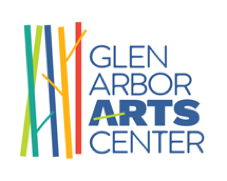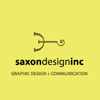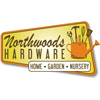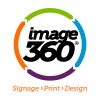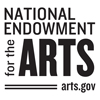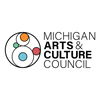
Creativity Q+A With Mark Mehaffey

Mark Mehaffey relocated to Leelanau County five years ago. He lives in a house that bumps up against the Sleeping Bear Dunes National Lakeshore — a fitting locale: A large portion of Mark’s work focuses on the landscape, although like so many things in this artist’s life, Mark is a guy whose creative work refuses to be shoehorned into tidy boxes. He moves fluidly between representing the visible world, and working with not-so-representational subjects: marks, lines, scratches, color stories. His practice is less focused on “subjects” than it is on ideas, the “what-if” of them that can take one down a wide range of creative avenues. On Christmas Day this year, Mark will turn 72. “Inside my own head I’m still somewhere between 24 and 26,” he said. Also inside his head are more ideas than he can explore in a single lifetime, he added. It’s a good problem for a visual artist to have.This interview was conducted in October 2022 by Sarah Bearup-Neal, GAAC Gallery Manager, and edited for clarity.
Pictured left: Mark Mehaffey
What’s the medium in which you work.
Mixed water media. Occasionally collage, but most of the time watercolor, gouache, and acrylic.
Do you consider yourself a painter?
I am a painter who uses watercolor, not a watercolorist.
That’s an interesting distinction. A “watercolorist” is what?
Somebody who relies on what gravity, paint, water, and paper will do all on its own accord.
Is watercolor just another technique/material?
Not just another material, but a material that’s available to me when that’s the best material for any given concept. Rather than allow the media or material to dictate to me what it does, I impose my will upon it.
Did you receive any formal training in visual art?
I have Bachelor of Fine Arts degree with Honors [1973] from Michigan State University. And a teaching certificate for arts, crafts and psychology.
How did your formal training affect your development as a creative practitioner?
Technically, hardly at all. Psychologically, it was an affirmation that making art, thinking about the arts, staying in [arts-related] education was important.
Describe your studio/work space.
It’s somewhere in the vicinity of 300 or 400 square feet. It’s essentially the whole upstairs of this house. I had a contractor open up the attic space above the main bedroom, and then I took the whole space above the garage as a studio space. It has two sky lights, one window, and enough lighting to make it daylight at night. It’s adequate for what I need to do, maybe a little cramped for large work: I’m currently working on a 48” x 48” collage, and it’s not the same as my previous studio [in Williamston, Michigan, where he resided for 31 years], which was 500 square feet and vaulted ceilings, but it works.
Talk about the themes and ideas that are the focus of your work.
I have a current motto based on the way I feel, and listen: Talk less, listen more. My interests, especially when it concerns painting, are broad. What I consider to be valid ideas and concepts for painting, equally broad. I explore lots of different roads, lots of different compartments, and if a tangent occurs to me, I take the time to follow the tangent because you never know where that might lead. If you saw the entire body of my work, and you didn’t know me, you’d probably think it was three or four different artists. Let us not even discuss “subject.” I really don’t approach [his work] as subject. I approach it as content: What is the idea behind the work, or elicits the work? That’s way more important than subject. Subject can be anything: meat, a tree, the sun, it can be sand dunes, right? It’s the idea that drives that work that’s more important. I take any subject and show you the effects of light — light, that’s the content.
Would you like to give an example of an idea you’ve tackled?
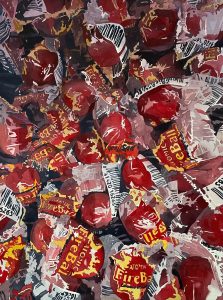
Let’s just take “meat” for example. My whole life revolves around my next meal. People who know me know I love to eat. Food is always paramount. Quite a few years ago, as my [late] wife Rosie and I were traveling the world — Europe, Asia, China specifically — and I needed to eat. Other people could avoid food that was too strange or tasted not the way they wanted it to taste. I avoided nothing. I became enamored with the idea of food as a messenger for what we are. I started a whole series of paintings — 12, huge, oversized transparent watercolors in the vicinity of 25” x 37” that visually describes what we eat, trying to make people think why. They range from a close-up of a meat counter, to barbecued pig hocks, to Atomic FireBalls, the jaw breaker candy, and everything in between.
What prompts the beginning of a project or composition?
An idea. A “what if?” Or, can I say something about this that is unique to the way I do things? Not something that has been said visually before. Or, can I make people think about something they probably should think about? Or, can I tilt the entire world in the direction it needs to be tilted?
How much pre-planning do you do in advance of beginning a new project or composition?
I have two separate approaches [dependent upon whether the work is representational or non-objective]. Let’s just go to the landscape, because of where we live. My house sits right in the middle of the [72,000 acre] Sleeping Bear Dunes Lakeshore. My side yard is part of the lakeshore. I can step out of my house, and be in the woods in about 10 steps. A lot of landscape forms appear in my work. By necessity, time being a factor, some of that’s based on photographic references. If I work from photographic references, then that photograph is distilled in a number of ways to simplify, and get to what I want to say. The photograph is taken with painting in mind. So when I bring the camera up, and look through the view finder, I’m already seeing a rectangular, picture space. That photograph is printed out, and distilled in my sketch book: Forms and shapes are eliminated; I get to the essence of what I really want to say. It’s simplified, and then I make a contour drawing of where I want the shapes to be, and then I — the artist — assign values [the lights and darks] to each of those shapes. Sometimes it’s based on the photograph. Often, it’s based on the way I think it should be rather than the way it is. Once I assign value, then I evaluate that value plan in my sketchbook. If I think it might make an interesting painting, then I might do the painting based on the plan in my sketch book, and I seldom revert to the photograph again.
About half of my work, I don’t start with a plan. I start with an idea. So I jump into the surface, maybe with mark making, maybe with scratchy brush strokes, maybe with a big, overall dominance of one color or value, and then I make the next mark based on that mark, and the next mark based on those two, and the next mark based on those three. It’s more of an intuitive approach, but it’s intuition based on 60-plus years of painting.
This second way of working is not the route you take when you’re working representationally.
Occasionally, recognizable subject may enter into this work, but most of the time [it’s] non-objective — although I’ve been known to hide social commentary in some of this work, or political messages, or other ideas I’d like people to perceive or think about. Sometimes they’re pure design.
If they’re hidden, how does the viewer perceive them?
Sometimes the viewer will pick up on the hidden messages. Those people who know my work will often look for them, and sometimes they don’t, and I don’t care one way or another because I’m the one getting a chuckle out of it.
You specifically referred to your photographs as “reference.” That indicates that your photographs are another way of gathering information; you’re not taking dictation from the photograph.
The last time I looked, there’s about 57,000 photographs on [his computer’s hard drive]. And, then I have a couple external hard drives that are also full. Each of those photographs was taken for a specific reason at that time. Sometimes it was the effects of light. Sometimes it was how shapes are put together. Sometimes it was the dramatic color or mood. That concept recurs to me as I look at those photographs. Once I have the idea that drives what I want to say visually, then I can expound on that idea — and it’s better for me if I can explore that idea in a smaller sketch book before I attack a painting. I made some decisions, prior to beginning a painting, that are very helpful.
Do you work on more than one project at a time?
Yes I do. My studio’s a trash pit right now. I took some small collages, and did some more, and now I’m blowing these up into 48” x 48”, 40” x 40”, and 48” x 60” giant collages that mimic the 6” x 6” and 6” x 8” collages. That’s been great fun. In addition to that, I’ve just ordered eight, 20” x 20” panels because I have an idea for a landscape series I want to execute in acrylic. Also, laying [in his studio], are five, totally nonobjective paintings that are transparent watercolor and gouache, and I go from one project to the next to the next based on what captures me when I walk in, or what’s in my head when I wake up in the morning.
Do you work in a series?
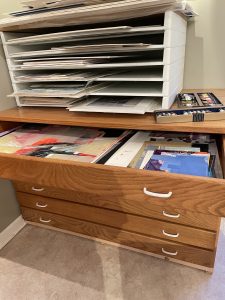
I do. And the series continues in my head for years, and years, and years. We’ll go back to the food series. That’s been ongoing for 13 years, and I only do two a year. My nonobjective work, think totally abstract — the two terms have become interchangeable recently — that’s pure design. That’s an ongoing project. I usually work on those paintings — eight, 10, 12 paintings at a time. They all get laid out on my two drafting tables, my two work tables, and the floor, and I cycle from one painting to the next, and the next. Eventually one or two might reach some sort of conclusion, and they get separated out, all the rest go back in the flat file until I feel like doing that again.
Clarify the distinctions between “abstract” and “nonobjective.”
Abstract implies that something has been abstracted. This is sometimes based on a recognizable image. Depending on how much the artist distorts – abstracts — this image, it may or may not be recognizable. Once that occurs it pushes into nonobjective (no subject) territory: [There is] no object. My work wanders back and forth, over and around this line. To most people these days, abstract has become the term that covers both.
The purpose of going back and forth between works is that you’ve found another idea to work on in the series to continue the idea forward — true or false?
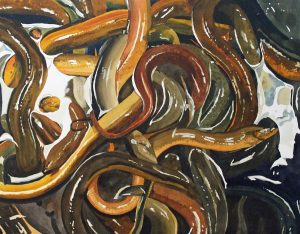
Yes. It sits there in the small part of my brain, in the background, and will eventually go, Oooh! I can paint this. I can make a series that will make people think about food, and what we eat, and why we eat food.
What’s your favorite tool?
Brushes. Counting brushes dedicated for watercolor and gouache, and brushes dedicated for acrylic, and brushes dedicated to be abused, the last time I counted it was pushing 400. How many do I actually use? The same seven or eight.
Then, someone might ask why you have so many?
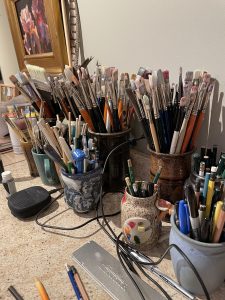 Every now and again, a specific brush will bring up a past idea, or elicit a future idea, and the what-if happens: What if I did this with this brush instead of that brush? Or, what if I held the brush this way instead of that way? Or, what if I were very delicate with this brush instead of heavy handed? I like brushstrokes, mark making with brushes.
Every now and again, a specific brush will bring up a past idea, or elicit a future idea, and the what-if happens: What if I did this with this brush instead of that brush? Or, what if I held the brush this way instead of that way? Or, what if I were very delicate with this brush instead of heavy handed? I like brushstrokes, mark making with brushes.
This collection of brushes goes back how far?
To the beginning of time. They probably go back to my late teens, early 20s. I’m hard on brushes. They’re a tool. Just like a computer is a tool. A hammer is tool. A pencil is a tool. They allow you to accomplish what you need to accomplish. Eventually, if you use the tools, you wear out the tools. Very, very old brushes have a tendency to go under the sink as glue brushes. Eventually glue brushes fall apart, and need to be trashed, and then other brushes take their place. It’s a constant recycling of brushes and uses.
Do you use a sketchbook?
Yes. I use a white page, drawing paper, 5 1/2” x 8” sketchbook because it’s easy to carry around and work out of. My idea drawings in the sketchbook are small — 3 1/2” x 4 1/2, or 5”. They don’t take that long, and I can decide if this is [an idea] worth painting by seeing it. Once a sketchbook is finished, it goes on the shelf, but I do take it to a printer, and have a booklet made of my sketchbook. I blow it up a little bit so they’re easily seen, and print and bind a copy of my sketchbook. That way, when I travel and teach, or want to share with somebody, I can pull out that book, and thumb through it, and not smudge the pencil.
When did you commit to working with serious intent?
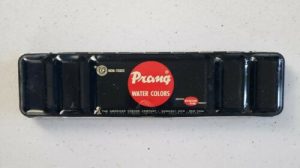
I was 10 or 11 years old. Psychologists have studied what makes people an artist, and one of the ways is this flash moment. So, when I was 10, I was hanging out with this friend of mine. We walked through his house — his dad was an artist — and on this big drafting table was a watercolor painting in progress, and all of his paints laid out, and brushes in containers, and paintings above him, and I just stopped dead, and was mesmerized by everything that was going on there. Visually. I vowed at that moment I would continue to figure that out. I got for Christmas that year, a little Prang set of watercolors, and I started with that and never stopped. The next Christmas I got the [Prang set with] 16 colors, including the black and white, and I thought I’d died and gone to heaven. For years, I’d sit in my room, and try to match the colors in my room — match the wall color, the book bindings, the wood work. I’d go out into the middle of the street, and try to paint the street in perspective to figure out how that worked. A couple years later, somebody told me there were actually books on perspective. All that occurred as a kid for me. Learning on my own, a lot of what I did because I just made watercolor do what I needed it to do, held me in good stead in later years.
What role does social media play in your practice?
Less now than it used to, although I’m still “on” both Facebook, and Instagram. I think Instagram makes more sense for visual artists — it’s shorter, to the point, and more visual. As I age I’m less into posting on social media as I am getting to work in my studio. [Social media] is a way to sell paintings, and I have sold paintings on Facebook and Instagram. It’s not my major focus, if it ever was. I prefer to deal with real people in brick and mortar galleries.
What’s its influence on the work you make?
I make what I make, and let the chips fall where they may. I paint for myself. I do what I do, and go to the next do-what-I-do.
What’s social media’s influence on how you let the world know about the work you make?
Less these days. I’ve come back as a supporter. I have a lot of friends that are deep into marketing on social media — by necessity. Some of us need to sell work to pay our bills, or to afford our habit. And, so, I’m fully supportive of their efforts. Do I need [to use social media for marketing]? Probably not. Most of the work I make goes to the five galleries [that represent him]. They do a good job of marketing, and take that off of my shoulders.
What do you believe is the visual artist’s role in the world?
Don’t you wish visual artists ran the world? I’ve found that creative people seem to be a lot more accepting of different, and divergent ideas, and a lot more open to the flow of both ideas and discussion of those ideas. Some folks dig their heels in because that’s the way it has always been — even if the research indicated that a change would make it better, they still want to stay stuck in the past. Creative people, and artists, are a little more open to change.
So, is the answer to the question of the visual artist’s role in the world that of “changemaker”?
Often we deal with what could be, rather than what is or what has been. It’s the what-could-be, and the always looking forward that artists seem to be more aware of than non-artists.
What part or parts of the world find their way into your work?
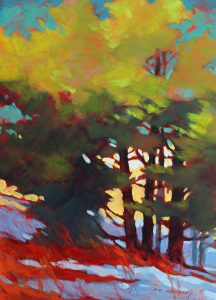
The woods. I grew up in the woods. At age of five I was let loose on two square miles of Northern Michigan woods with a trout stream that ran right through it. When you let a five-year-old loose on that kind of expanse, results can be profound and very interesting. I learned to find my way in the woods. I learned all of the animals of the woods. I learned what you need to do to see in the woods. So, I continue to spend time in the woods. Since I live in the middle of the Sleeping Bear Lakeshore, what I do is drive, park, and hike right into the woods off-trail, and then go, and go, and go, and go. With my visual memory, I can remember that hike forever.
When you’re walking in the woods, is it fair to say you’re not only doing it for your soul, but you’re also taking things in visually that get catalogued for future use?
I see paintings. I see them in terms of shape, color, value, texture, and how I might manipulate all those into an interesting painting. We all carry cameras now, in the form of a cell phone. I carry a point-and-shoot with good capabilities. If I see a “painting,” I might snap a photograph of it. That’s why there’s 30,000-plus images on my cell phone.
How does living in Northern Michigan inform and influence your creative practice?

Hugely. I prefer late fall and winter because of the lack of people. It becomes a matter of simplicity and complexity. In my head, I prefer simplicity, so the starkness of winter feeds that simplicity. I lean more and more, even in plein air painting, toward painting in the winter for the simplified landscape form. Complexity enters into it also, especially when we’re dealing with this riot of glorious, fall color, and the myriad shapes in the woods. I was sitting in the woods last night, with the light shining through, and staring into the woods. A painting of that complexity would take lots of hours to include it all.
Is the work you create a reflection of this place?
Yes. Specifically, most of my landscapes are based on where I live, and the surrounding area. There’s a lot of interesting farm land between Empire, and Traverse City, and a lot that is interesting beside the lakeshore, and a lot of lakes that need to be fished. You add the rivers, and the dunes, and everything on top of that: I’m going to need three lifetimes to incorporate all the forms, and shapes I see daily.
Did you know anyone, when you were growing up, who had a serious creative practice?
Remember my earlier story about flash beginnings? That gentleman was middle age at the time when I walked through [his home]. Years, and years later, we had a show together. So, I was in my mid-20s, and he was probably 50, 60 at the time. Because of that beginning, he and I have talked through the years. We decided to have a show together. It was a lot of fun, and made the circle come round. His name was Pat McCarthy.
Who has had the greatest and most lasting influence on your work and practice?
My wife Rosie. First and last critic, confidant, marketer, and partner. We lost Rosie to metastatic lung cancer [in June 2022]. It was devastating. Rosie was the biggest influence. I’m learning life alone, let’s put it that way. [Mark and Rosie were married for 51 years at the time of her death.]
Who’s the critic, confidant, and marketer now?
That is a huge hole. To be determined. Probably me. It’s going to be a hybrid. I don’t have the time to do all of that. That’s part of the reason my brick-and-mortar galleries have become so important. They’ve taken over a lot of the role of marketing. I paint, and paint, and paint, and feed them. Some of the work is wildly popular. Some of it, not so much. My job is to create. They do the marketing. All of the owners/directors of the galleries that represent me: I’m proud to call them friend.
What is the role of exhibiting in your practice? In this case, I’m differentiating between showing work in a sales gallery, and showing work at a nonprofit arts center.
If I have work that fits a curated exhibit, I often will put a piece in the show. I will, fairly often, enter pieces in juried exhibits. I do less of that than I used to — it was a promotional tool for me. It worked. Got me lots of teaching jobs, accolades, and that kind of thing. I pick three or four large water-media shows, and most of the time enter. My work is more internal these days, as I’ve gotten older, and the the only person I feel like I need to please is me.
How do you feed/fuel/nurture your creativity?
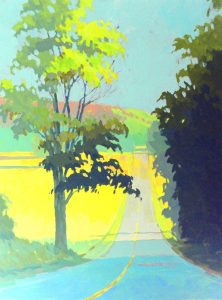
So here’s the deal: work. Work begets more work. I don’t wait around for inspiration. I have way more ideas than I could ever get to in this lifetime. Those ideas are because I work. I get up, I do what needs to be done around the house, and then I go to work. Sometimes I hit the studio at 8 am. Sometimes I hit the studio at 6 am. Sometimes I hit the studio at 1 pm after lunch, and I work. And then the next day, I work some more. I occasionally take the weekend off — for visitors, or to go plein air painting. Basically, I’m in the studio working. When you’re working, you get ideas. You’re working on this idea, and while you’re working another idea may occur to you, and so, you should follow that idea. And while you’re working, another idea will occur to you. It’s a reoccurring thing. But to get there, you need to get to work. On the days I don’t feel like it, I go to work anyway.
What drives your impulse to make?
It’s over-active brain, thought process. It’s constantly making connections in my head, trying to link an idea with a process. Some ideas are better said one way than another. Do I make mistakes? Yes. Lots of mistakes. Mistakes can lead to breakthroughs, to a different avenue to say what you wanted to say. It’s a constant firing of synapses. Three lifetimes might do it for me. Maybe four. One, no.
I want to talk about your former day job, which was teaching art in the public schools. You taught art in the public schools — from elementary to high school — for nearly 30 years, in the Lansing area. Talk about the challenges that teaching presented to your own studio practice.
I retired 20-some years ago, and I didn’t really retire. I just went right into teaching water media workshops for adults for private and public organizations. I just taught my last travel workshops. Now I’m retiring from that job as well. Traveling isn’t as much fun as it used to be. Even though they pay well, and it’s fun to share, as I get further into my older years I feel more like I need to paint, and walk in the woods [versus] travel, and teach. Will I continue to teach? Yes. I have enough [local] teaching opportunities to keep me going.
While you were teaching in public school, did that drain any of the creative energy you had for doing your own work in your studio?
Especially when I taught in the public school, it was my goal to do a good job. Some days were totally exhausting. To do a good job, it took a lot of energy, so there were times where I didn’t have the energy to paint evenings. I’d paint on the weekends, or call in sick, and paint all day. When summer arrived, I only took one day off. School ended. The next day of summer I took that day to rest, relax, and the next day I went straight to the studio and put 8-to-12 hours in, all summer long for 30 years. It’s that work-ethic thing. Growing up, I can remember my dad saying to me, No matter what you do, be sure you work hard at it.
How did the work of your day job cross-pollinate with the work you did in your studio?
Especially as a high school art teacher, you have to be able to teach all of it. Printmaking, painting in all media, jewelry making, metalsmithing, ceramics, I had to be able to do all of that to be able to teach it. Am I good at all that? Not really. Teaching during the day, against vast expanses of concept, processes, and media, informed what I do visually. I’m still there, but it’s all painting, collage, and two-dimensional now. What I do, and the ideas I have, are broad — just like in the teaching days. It informed. I guess it still does.
Read more about Mark Mehaffey here.
Sarah Bearup-Neal develops and curates Glen Arbor Arts Center exhibitions. She maintains a studio practice focused on fiber and collage.
